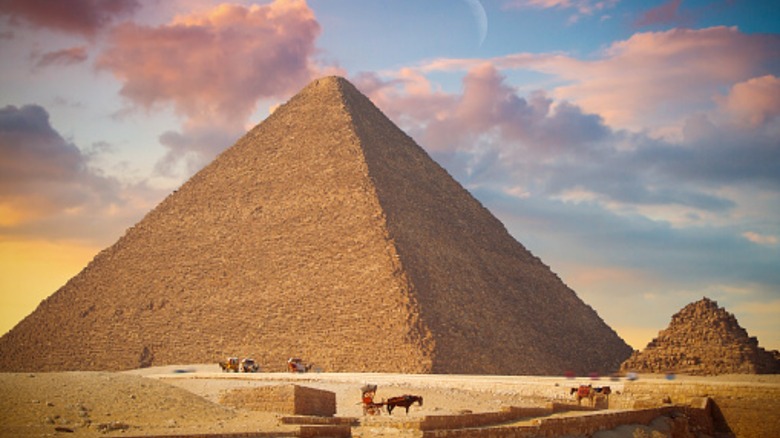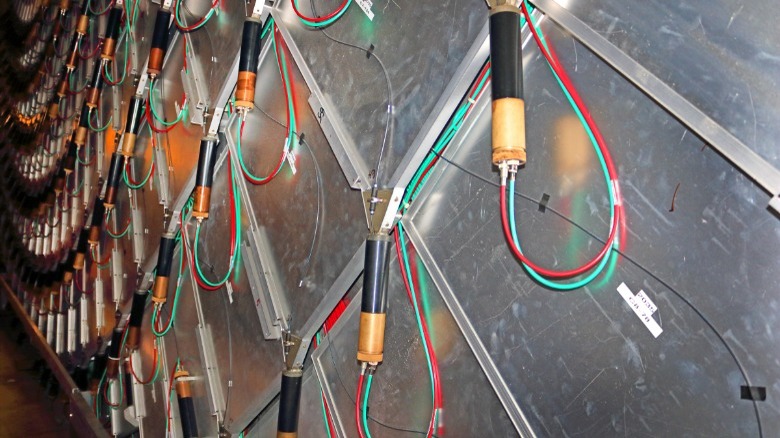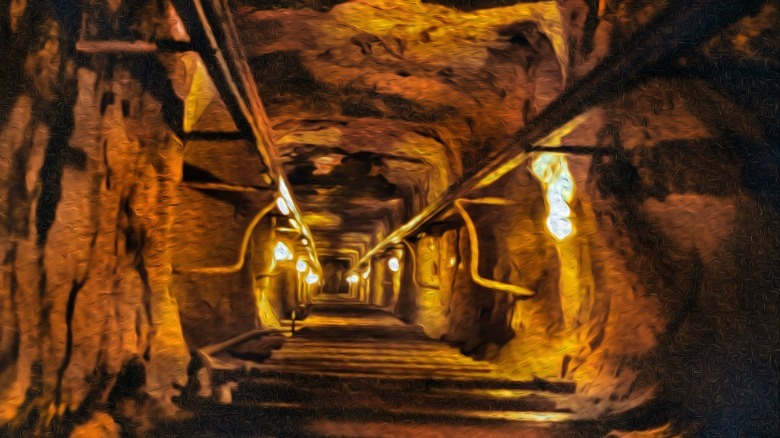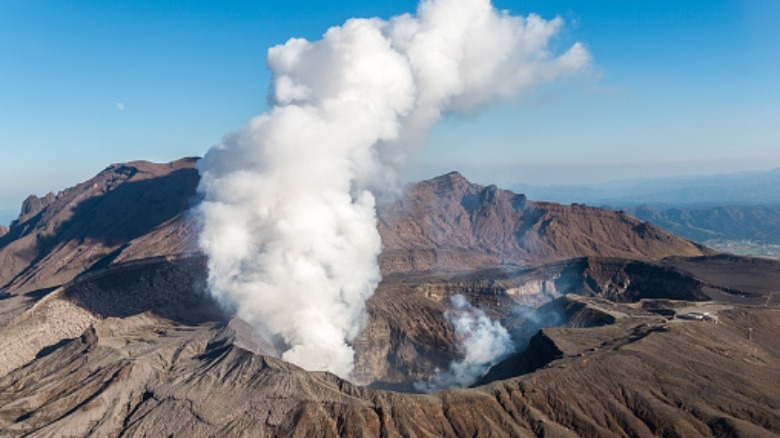How Scientists Explored A Cavern In The Great Pyramid Of Giza Without Ever Stepping Foot Inside
Considering the age of the Great Pyramid of Giza, we might assume we know all there is to know about it. That proved not to be true in 2017 when a team of scientists discovered a previously unknown "void" in the pyramid (via USA Today). They found this mysterious open space using a technique called cosmic-ray muon radiography.
What is that, exactly? It's a process that uses subatomic particles called muons to explore a structure's or object's density and composition. It can identify gaps in the structure based on how many muons are able to pass through the structure to the other side. Muons have a much larger mass than some other subatomic particles, like electrons, which gives them the power to penetrate a solid object (via Science News). Although they decay quickly, they travel at near-light speed, so they can traverse an object before decaying, according to Phys.org.
Muons form when cosmic rays hit Earth's atmosphere. Cosmic rays are high-energy particles, such as protons, coming from outer space. When they hit our atmosphere, they decay into smaller particles called pions and kaons, which then decay into muons and neutrinos, which eventually reach Earth's surface. The muon's natural purpose is unknown, but humans have now found a way to make use of them.
How muons are detected
Scientists first used muon radiography on the Giza pyramids in the 1960s. That study didn't uncover any previously unknown chambers in the smaller Khafre pyramid, but it showed the potential for using muon radiography to explore hidden spaces. Technology has advanced a bit since then, so scientists can now make smaller muon detectors that more easily fit into those spaces (via Science News).
For this type of study, muon detectors (pictured) are placed in and around the structure — in this case, the pyramid. Based on how many muons pass through and reach the detector, scientists can determine the structure's density and where it may not be completely solid. In the case of pyramids case, the lack of solidity shows where rooms and other open spaces are located.
Muon detectors can be made in several different ways. The 2017 study of the Great Pyramid used three different kinds. One was gas-based. The second used a chemical called scintillator; when a muon reaches it, it emits light. The third was used nuclear emulsion, a type of photographic film. When muons reach these detectors, they create a kind of shadow. Where there are gaps in the shadow, there are gaps in the structure.
Discovering a void
The Nature article on the 2017 study explained that both nuclear emulsion and scintillator detectors were placed in the queen's chamber in the Great Pyramid (interior pictured), while gas-based detectors were placed outside the pyramid. While results from the scintillators could be measured by a computer, those from the nuclear emulsion detectors had to be analyzed in a lab (via Science News). Results from all three types of detectors showed the existence of a "void" in the pyramid that no one knew about. The article notes that each set of results was analyzed independently, and each confirmed the finding.
The article explains the "void" is almost 100 feet long and located above the pyramid's Grand Gallery. The scientists note that "this constitutes the first major inner structure found in the Great Pyramid since the nineteenth century" — which is why it was such a big deal. According to Phys.org, it was considered one of the year's biggest scientific discoveries. The team continued to take muon measurements afterward to learn more about the space.
Other uses of muon radiography
Now, another team is planning to study the Great Pyramid in even more detail using muon radiography. The scientists working on this new study are using detectors 100 times more sensitive than those used in the 2017 study (via Phys.org). According to Science News, they also plan to move their detectors to different locations to gather more results. They hope to create the first tomographic image of the pyramid three-dimensional, unlike previous two-dimensional images of it. Their goals include analyzing the whole pyramid's structure and learning about the techniques used to build it.
Some scientists are also planning studies of Mayan pyramids in Mexico. Like the Giza team, they hope to discover previously unknown rooms or architectural elements. Science News explains that muon radiography can help scientists probe deeper into a structure than other techniques like X-rays. Other groups are using the technology to examine the inner structure of volcanoes. They hope to better predict eruptions and the other natural disasters that could result from an eruption. It seems that all the potential uses of muon radiography are still being uncovered.



